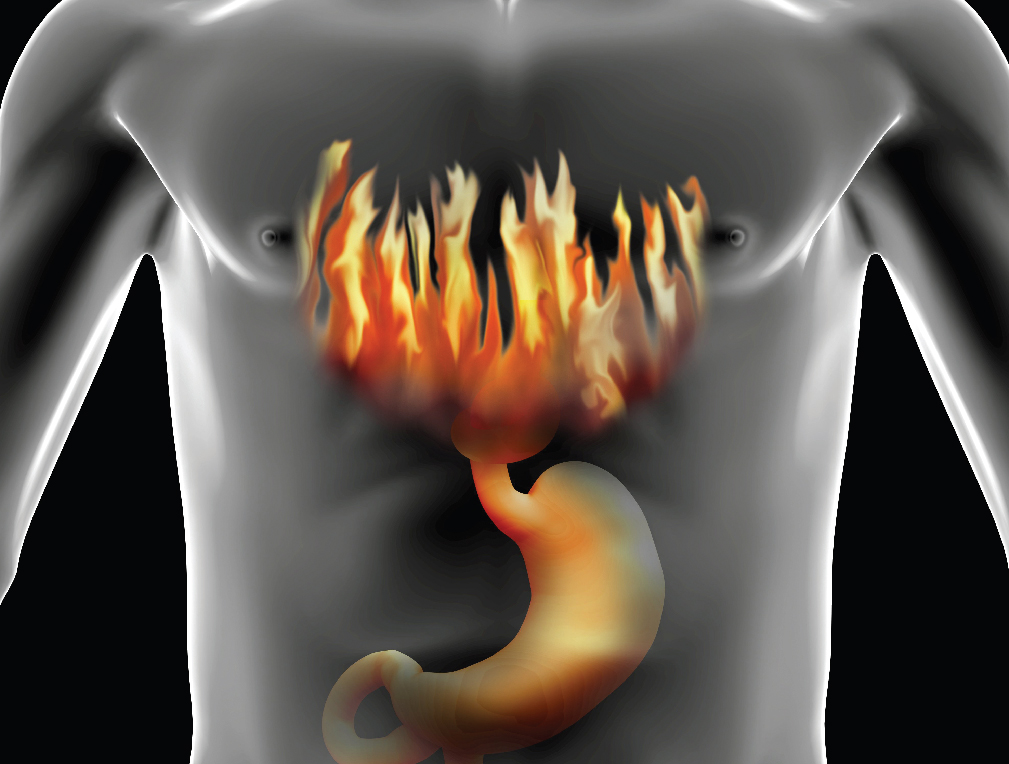Heartburn and indigestion are two separate conditions that occur when acid leaves the stomach and irritates surrounding organs.
Heartburn
Heartburn, or acid reflux, occurs when the ring of muscle (sphincter) between the stomach and the oesophagus (food pipe) allows stomach acid to leak back up into the oesophagus.
Unlike the stomach, the oesophagus doesn't have a protective lining and therefore the acid causes irritation.
The main symptom of heartburn is a burning pain behind the breastbone. Possible causes include being pregnant or overweight, or wearing tight clothes, all of which can put pressure on the stomach; smoking, and eating certain foods (e.g. tomatoes, spicy food, fatty food and coffee).

The main symptom of heartburn is a burning pain behind the breastbone
Indigestion
Also known as dyspepsia, indigestion occurs when acid from the stomach comes into contact with the lining of the digestive system. This can cause pain in the upper abdomen, belching, nausea and a feeling of fullness. Symptoms often occur in bouts that come and go, rather than being present all the time.
Certain triggers can cause indigestion or make it worse. Examples include: smoking; eating heavy or spicy meals; alcohol, and even certain types of medication, such as nonsteroidal anti-inflammatory drugs (NSAIDs), which can irritate the lining of the stomach.
Recurring indigestion can be a symptom of a more serious problem, such as a stomach ulcer, hiatus hernia or an infection called Helicobacter pylori. If you suspect that this could be the case, refer the customer to the pharmacist.
Reflection point
If a customer comes into the pharmacy presenting the the following symptoms, what would you suggest they are suffering from?
- Pain in their stomach
- Belching.
